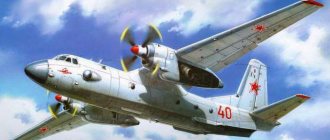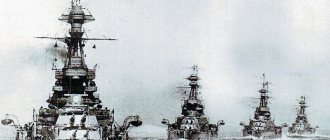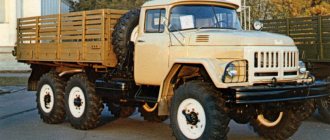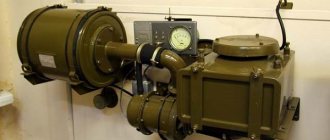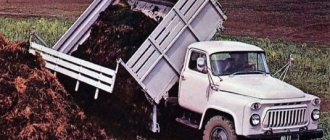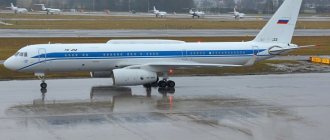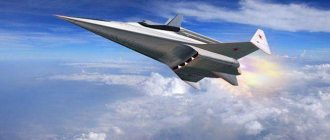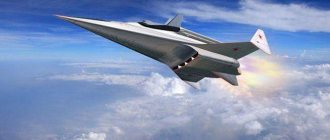The Harrier attack fighter-bomber is an aircraft that is produced in Britain. It is distinguished by excellent characteristics, the possibility of vertical takeoff and landing, as well as structural transformations. The first flight on this unit was made back in 1960. For many years it has been used in the armies of the USA, Spain, Thailand, and Great Britain. The aircraft is constantly being improved and has several modifications.
Series GR-1: description
In fact, the Harrier is an aircraft that, for the first time in aviation history, was able to perform vertical takeoff and landing. The first prototype took off in the fall of 1960. Serial production began seven years later. In nineteen sixty-nine, the first squadron of the British Air Force was formed, consisting of twenty-one units of the aircraft in question.
The main purpose of the aircraft of this series is to support ground forces. This is due to high maneuverability and the ability to operate in different climatic regions. The range of altitudes at which the unit is oriented is from three to fourteen thousand kilometers. The design uses materials from aluminum, titanium and magnesium alloys. In addition, some parts of the body and components are made of composite components and high-strength steel.
Equipment
The Harrier GR-1 combat aircraft features a riveted fuselage with a pair of technological connectors. The nose section includes the cockpit. Its rear line runs along an inclined rib, which serves to install an ejection seat. Power and related components are located in the central fuselage compartment. There are two fuel tanks at the front, each of which holds two hundred and thirty liters of fuel.
Above the main rack there is another tank with a capacity of four hundred and seventy-three liters. There are 177-liter tanks installed between the nozzles, and 785-liter tanks under the wing caisson. It is possible to install additional tanks that guarantee long flights without refueling.
Airplane on display
United Kingdom
- Harrier GR.7 ZD318
on display at the Harrier Heritage Museum, RAF Wittering, Cambridgeshire, England - Harrier GR.9A ZD433
on display at the Fleet Air Arm Museum, RNAS Yeovilton, Somerset, England - Harrier GR.9A ZD461
on display at the Imperial War Museum, London, England - Harrier GR.7 ZD462
on display at Dyson headquarters, Malmesbury, Wiltshire, England - Harrier GR.9 ZD465
at DSAE Cosford, Shropshire, England - Harrier GR.7A ZD469
at the gate of RAF Wittering, Cambridgeshire, England - Harrier GR.9 ZG477
on display at the Royal Air Force Museum London, Hendon, England - Harrier GR.7 ZG509
on display near Petersfield, Hampshire, England
United States
Harrier GR.5 ZD353 on display at the Pima Air and Space Museum, Tucson, Arizona
Peculiarities
The aircraft in question is one of the most popular aircraft operated by the US Air Force. The Marine Corps uses it for cover and joint assault on intended targets. The fighter is equipped with nose landing gear in the central section of the fuselage. The front element is adjusted using a pair of hydraulic cylinders, providing a forty-five degree turn. The control unit is located in the rear fuselage compartment. The one-piece rotary tail and keel are made in the form of a standard horizontal design. The steering wheel has a honeycomb filling and extends in flight to a correction angle of up to sixty-six degrees. The continuous-type aircraft wing is fixed to the fuselage in six places. In addition, each wing has four points designed to accommodate pylons for combat weapons or additional fuel tanks.
Engine and related units
US military jet fighters under the Harrier GR-1 brand are equipped with a Rolls Roys Bristol turbine jet power unit. It is attached in four places to the frames of the central fuselage. The nozzles are rotated by a pneumatic motor. Changing the braking and take-off thrust vector indicators is the possibility of changing the flight position by no less than ninety degrees.
The aircraft is adjusted in space as follows:
- operating four compressors, aggregated with an air duct in the bow and tail;
- three nozzles, which are located in the rear beam and serve as tonnage control;
- a pair of exhaust elements designed for channel control.
The jet activation system is activated during vertical takeoff and landing in flight mode at low speeds (the motor nozzles shift to twenty degrees or more).
The evolution of the Hawker Siddely Harrier fighter
The Harrier is a multi-generational British vertical take-off and landing combat aircraft. Having first flown in 1960, it was in service with the Royal Air Force, US Marine Corps, Thai Air Force and Spanish Air Force for many years. All this time, the combat vehicle was constantly evolving, preserving already proven solutions and absorbing technical innovations. Harrier GR.1 multi-role attack and reconnaissance aircraft with vertical take-off/landing
Harrier GR. Mk.1 is the first serial combat aircraft in world aviation capable of short or vertical takeoff/landing. The creation of the Harrier was preceded by long-term testing of the R-1127 Kestrel VTOL aircraft, created by Hawker Siddeley Aviation Limited (today British Aerospace). The prototype made its first flight on November 24, 1960. In 1967, serial production of the Harrier began. Two years later, the first combat squadron was formed, consisting of 12 aircraft and becoming part of the British Air Force.
The Harrier GR.1 was intended to support ground forces. In this regard, it had to have high maneuverability and operate in any climatic conditions at low altitudes (up to 3050 m). Maximum operational altitude – 13700 m. Design dive speed – M=1.2. The Harrier aircraft's airframe is designed for an overload of up to 11.7d. The design uses alloys of aluminum, magnesium and titanium, as well as high-strength composite materials and steel.
The fuselage of the Harier attack aircraft and reconnaissance aircraft is made as a riveted continuous structure with two technological connectors. The pilot's cabin is located in the bow. Its rear border runs along the inclined partition used for mounting the ejection seat. The engine and components are located in the central section of the fuselage. In the front part of it, two fuel tanks (capacity 232 l) are symmetrically placed on the sides. Another 473-liter tank is mounted above the main landing gear compartment. Between the engine nozzles there are two 177-liter central tanks. The wing caisson has two fuel tanks of 785 liters each. If necessary, drop tanks with a capacity of 455 liters and 1500 liters for long-distance ferry flights can be suspended under the wing.
The Rolls-Royce Bristol Pegasus 101 turbojet engine is attached at four points to the power frames of the central fuselage section. The nozzles are rotated using a pneumatic motor from a horizontal position by 98.5 degrees, changing the position of the thrust vector to takeoff (90 degrees) and then to braking. The position in space is changed using the engine as follows. Four air ducts extend from the compressor - to the tail and nose, as well as to the wing console, where the roll control nozzles are located. The tail boom has three nozzles: one (together with the nose) is used for pitch control, two nozzles are used for channel control. The thrust control system is engaged when the engine nozzles are moved 20 degrees or more from the horizontal position during vertical takeoff and landing or low speed flight.
The central section of the fuselage houses the rear and nose landing gear. The front landing gear is controlled by two hydraulic cylinders, which provide a 45-degree rotation. The equipment compartment is located at the rear of the fuselage.
The keel and horizontal all-moving tail have a conventional design made of aluminum alloys. The steering wheel is made with honeycomb core. The lower part of the tail has an air brake that extends to an angle of up to 66 degrees in flight.
The wing on the Harrier aircraft is continuous and is attached to the fuselage at six points. The design is coffered with two lower and three upper milled panels. The wing has nodes in four places for attaching pylons for combat load. Fuel tanks can be suspended on internal pylons. Containers of 30 mm Aden cannons with 130 rounds of ammunition (weight 205 kg each) can be suspended under the wing. The total combat load can reach 3.1 tons.
Later they released a modification of the Harrier GR. Mk.1A equipped with a Rolls-Royce Bristol Pegasus Mk 102 engine of greater power. Further development of the Harrier followed the path of developing a multi-role strike fighter with vertical take-off/landing. The first modification was the Harrier GR. Mk.3.
Tactical and technical characteristics: Adopted into service - 1969; Wing span – 7.7 m; Wing area – 18.68 m2; Height – 3.43 m; Length – 13.87 m; Empty aircraft weight – 5530 kg; Maximum take-off weight - 11340 kg; Fuel in internal tanks – 2865 kg; Fuel in PTB – 2×1500 kg; Engine type – 1 turbofan Pegasus Mk. 101; Engine thrust – 1x8610 kgf; Maximum speed – 1360 km/h (at altitude); Maximum cruising speed – 1185 km/h; Practical range – 3700 km; Combat radius – 1200 km; Practical ceiling – 15000 m; Crew – 1 person; Armament: Combat load - 2270 kg; 5 hardpoints: 2 containers with 30 mm Aden cannons, 2 AIM-9D Sidewinder air-to-air guided missiles, 2 AS.37 Martel air-to-ground guided missiles, or 8 225 kg or 5 450- kg bombs, or 2 incendiary bombs, or 8 12.7 kg practical bombs, or 4 cluster bombs, or 4 Type 155 SNEB NUR launchers or 6 19x68-mm NUR launchers or 1 container with reconnaissance equipment.
Harrier GR.3 multi-role vertical take-off/landing fighter
The multi-role fighter GDP GR.Mk-Z differs from the basic modification of the Harrier GR.Mk-1 by the upgraded Rolls Royce Pegasus 103 engine. Take-off thrust was 9753 kg. The fuselage has not undergone significant changes. During operation, it became clear that with a full combat load during vertical takeoff, the aircraft consumes too much fuel - which, however, is a common feature of all Harriers with vertical or short takeoff/landing. The standard equipment of the GR.Mk-Z includes an in-flight refueling system, a laser rangefinder and a head-up display.
Features of the vehicle: two 30-mm Aden cannons installed under the fuselage; aerodynamic braking device; the ability to suspend Matra missiles under the wing.
The avionics of the Harrier GR.1 and GR.3 aircraft is based on the FE541 inertial targeting and navigation system from Ferranti. This system provides autonomous access to the target, aiming, launching missiles, bombing and firing guns. Also, the aircraft are equipped with VHF and HF radio stations, radar identification and short-range navigation equipment “TAKAN”.
The multirole fighter's small arms and cannon armament consisted of two detachable 30 mm Aden cannons. Under the fuselage and inside it there were 1821 kg of weapons. Combat load of external hardpoints – 2×454 kg. Guided missiles - 2 x AIM-9 air-to-air missiles. In blocks LAU 10 - 16 (4x4) unguided missiles of 127 mm caliber, in blocks LAU 68 - 28 (4x7) Hydra missiles of 70 mm caliber, in blocks LAU 69 - 76 (4x19) Hydra missiles " The aircraft could carry high-explosive free-fall bombs Mk.81 (5x119 kg) or Mk.82 (5x227 kg) or Mk.83 (2x460 kg), incendiary bombs - Mk.77 (5x340 kg) as well as 4 cluster bombs Mk.20 or 2 – CBU-24.
Since 1970, three squadrons in Germany and one in the UK have been equipped with Harrier GR.3 aircraft. The last combat unit to operate the GR.Mk-3 was the operational re-equipment unit stationed in Belize. Having served for almost 20 years, these vehicles were replaced by new modifications GR.Mk-5 and Mk-7.
Tactical and technical characteristics: Adopted into service - 1970; Wing span – 7.7 m; Wing area – 18.68 m2; Aircraft height – 3.45 m; Aircraft length – 13.87 m; Maximum take-off weight – 11430 kg; Empty aircraft weight – 6140 kg; Combat load during takeoff with a short run - 3600 kg; Combat load during vertical take-off – 2300 kg; Internal fuel mass – 2295 kg; Fuel mass in the PTB – 2400 kg; Engine type – turbofan Pegasus Mk. 103 (thrust 8750 kgf); Maximum speed – 1350 km/h (at altitude); Maximum speed – 1180 km/h (at the ground); Practical range – 3425 km; Service ceiling – 15200 m; Combat radius – 520 km; Crew – 1 person.
Multi-role vertical take-off/landing fighter Harrier GR.5
Since July 1987, the Harrier GR.5 tactical fighters with short or vertical take-off/landing began to enter service with the Royal Air Force. It differs from its predecessor, the Harrier GR.3, in its ability to carry a larger combat load and increased range.
The GR.5 fighter is designed to conduct aerial reconnaissance and provide close air support to ground forces.
The Harrier GR.5 is structurally a cantilever monoplane with a swept high wing, a bicycle chassis and a single-fin tail. A special feature of this aircraft is the widespread use of composite materials in its design. Their share is 26.3%. The non-separable wing has a thicker supercritical profile compared to the Harrier GR.3 wing. The wing span is increased by 20%, the area by 14.5%. Along the leading edge, the wing sweep has been reduced by 10%. Composite materials are mainly used to make the wing. Aluminum alloy is used for the leading and trailing edges of the wing and tips. According to British experts, an increase in the area of the flaps and wing, and the use of hovering ailerons, which deviate at a certain angle depending on the position of the engine nozzles, improved the performance of the Harrier GR.5 when using an aircraft with a short takeoff.
At the same time, innovations introduced into the wing design led to an increase in drag, which was the main reason for the decrease in maximum speed by 80 km/h. It is believed that this reduction in speed can be eliminated due to minor changes in the interface of the fuselage and wing, as well as the design of the air intakes. The fuselage is slightly longer in comparison with the Harrier-GR.Z. The forward part of the fuselage is made mainly of composite material (graphite-epoxy), the tail and central parts are made of aluminum alloy. Titanium is used in the manufacture of two ventral heat shields and a small panel in front of the windshield. Between the main and nose landing gear, a “box” can be installed at the bottom of the central part of the fuselage, which consists of a retractable transverse flap and two longitudinal rigidly fixed ridges. The transverse shield is located behind the nose landing gear, the ridges are attached to the gun pods. During vertical takeoff and landing, the “box” captures part of the exhaust gases reflected from the ground. As a result, an air cushion is formed, increasing the lifting force by approximately 500 kg.
The single-seat cabin of a new design, with air conditioning, is made entirely of composite materials. The pilot's seat is located 30.5 higher compared to the Harrier-GR.3. Thanks to this and due to the use of a new canopy, the pilot receives a good all-round view.
The Harrier-GR.5 power plant is one Rolls-Royce Pegasus Mk.105 bypass turbojet engine with variable thrust vector direction (maximum static thrust is 9870 kgf). There is a 4-second (short-term) transfer to a higher temperature mode of engine operation during a vertical landing. Compressed air from a compressor is used to power the on-board oxygen system and flight control system, as well as to pressurize the cabin.
The fuel system is largely similar to that of the Harrier GR.3, but by increasing the volume of the wing fuel tanks, the capacity of the internal fuel tanks reaches 4,200 liters, an increase of 45%. more than its predecessor. In addition, the GR.5 can be equipped with 4 external fuel tanks (each capacity is 1135 l). There is an in-flight refueling system.
Radio-electronic equipment includes noise-resistant VHF and HF radio stations, Kossor IFF 4760 radar identification equipment, Ferranti FIN 1075 inertial navigation system, TAKAN short-range navigation equipment, landing system receiver, digital computer of aerodynamic parameters, electro-optical indicator (data is displayed on windshield), weapon control system. The weapon control system ensures the use of various guided weapons, including weapons with a television or laser guidance system. The fighter is also equipped with an electronic integrated radio countermeasures and radio reconnaissance system, including an active jamming station, an AN/ALR-67(V)2 detection receiver, and an AN/ALE-40 IR trap and anti-radar reflector release device. A forward-looking infrared reconnaissance station can be installed under the forward fuselage.
The Harrier GR.5 fighter is equipped with 2 ventral cannon mounts with 25 mm Aden cannons (200 rounds of ammunition for each cannon). To accommodate other weapons, 9 hardpoints are used: 1 between the cannon mounts under the fuselage and 4 under each wing console. Two underwing assemblies, which are located in front of the underwing landing gear, serve to install launchers for short-range AIM-9L Sidewinder air-to-air missiles. The remaining units can be used for hanging fuel tanks, bombs for various purposes and launchers of unguided aircraft missiles.
Tactical and technical characteristics: Adopted into service - 1987; Wing span – 9.25 m; Wing area – 21.37 m2; Height – 3.55 m; Length – 14.12 m; Maximum take-off weight – 13500 kg; Empty aircraft weight – 6250 kg; Combat load during vertical take-off – 3000 kg; Combat load during takeoff with a short run - 4170 kg; Weight of internal fuel – 3500 kg; Fuel mass in the PTB – 3700 kg; Engine type – turbofan Pegasus Mk. 103 (thrust 9870 kgf); Maximum speed: — at the ground — 1100 km/h; — at altitude — 1150 km/h; Combat radius - 520 km; Practical range - 3825 km; Crew – 1 person.
Harrier GR.7 VTOL tactical strike fighter
The Harrier GR.Mk7 is the most common Harrier model in service with the Royal Air Force. This aircraft is jointly manufactured by British Aerospace and McDonnell Douglas. The UK initially withdrew from the joint Harrier program, but then returned. The British Air Force needed 94 vehicles, and the United States needed more than three hundred. British Aerospace is the junior partner and is responsible for 40% of the work on aircraft destined for Spain and the US, and 50% for British aircraft. BAe was engaged in the manufacture of the stabilizer, tail and central sections of the fuselage, as well as rudders and fins of aircraft. The company also carried out the final assembly of British cars.
McDonnell Douglas specialists developed a completely composite wing for the aircraft, which made it possible to reduce its weight by 150 kg. The supercritical wing profile, which has a large relative thickness, made it possible to increase the fuel supply. The AV-88 wing is the largest single composite structural element ever used on a combat aircraft. The upper part of the wing was made removable for access to the internal compartments. Single-slot flaps are larger; there are bulges in the root part of the wing.
The RAF Harrier GR.Mk7 received Rolls-Royce Pegasus Mk 105 bypass turbojet engines (95.6 kN thrust). To eliminate the gyroscopic effect, the motor shafts rotate in opposite directions. Stabilization of the aircraft is ensured by valve-nozzles of the gas-dynamic control system, located in the tail and nose sections as well as on the wingtips. Installed on the Harrier GR.7, the front pair of rotary nozzles with a new design, modified air intakes and a lift-increasing system made it possible to obtain an increase in thrust.
The Harrier GR.Mk 7 also received upgraded avionics and a forward-looking IR system. The GR.Mk 7 is equipped with a noise-resistant GEC Avionics ADЗ500 radio communication system and a Cossor IFF 4760 gas recognition system. The moving map indicator has been left in place. The AN/ALE-40 automatic weapon for shooting IR traps and dipole reflectors is mounted at the bottom of the rear fuselage; an additional BOL machine gun is located in the pylon. In the nose, under the fairing, there is an IR forward-looking system.
The tactical strike fighter was equipped with a new 25-mm ADEN cannon, developed by the Royal Ordnance state weapons arsenal. The lower rate of fire was compensated by the placement of two guns. The gun is a revolver type and has a rotating drum with chambers. Rate of fire – 1650-1850 rounds per minute. Hunting 8L755 cluster munitions became one of the main means of destruction of Harrier aircraft. The 227-kilogram cassette container contained 147 submunitions (small-caliber cumulative fragmentation bombs) placed in seven compartments. The cassette was opened using pyrotechnic charges, and submunitions were pushed out of its cylindrical compartments by a pneumatic mechanism at certain intervals.
Performance characteristics: Length – 14.53 m; Swing – 9.25 m; Wing area – 21.37 m2; Height – 3.55 m; Powerplant – 1 Rolls-Royce Pegasus Mk 105 turbofan engine; Thrust - 95.6 kN; Empty weight – 6336 kr; Maximum take-off weight – 10410 kr; Total fuel reserve - 8858 l Maximum speed at high altitude - 1041 km/h; Maximum speed at low altitude - 1065 km/h Service ceiling - 15240 m; Take-off run for short take-off – 435 m; Ferry range - 3640 km Combat range: - with vertical take-off - 277 km; - during takeoff with a short run - 2722 km; Crew – 1 person; Armament: two Aden 25 mm cannons (total ammunition 400 rounds); Nine hardpoints: 1 under the fuselage, 4 under each wing; Maximum combat load: - for vertical take-off - 3 tons; — during takeoff with a short run — 4170 kg; On two nodes in front of the underwing landing gear are launchers for AIM-9L Sidewinder air-to-air guided missiles. Other nodes can carry: 4 AGM-65 Maveric air-to-surface guided missiles; 4 AIM-120 AMRAAM or AIM-9 air-to-air class; 4 SeaEagle or AGM-84 Harpoon anti-ship missiles; 2 containers with 30 mm caliber guns; 2 AGM-62 Walleye optically guided bombs; various NUR launchers and bombs, as well as containers with electronic warfare and reconnaissance equipment.
Harrier GR.9 VTOL tactical strike fighter
The RAF Harrier GR.9/9a program has two main elements. The first element is an integrated weapons program designed for the unified use of a wide range of developed/modernized high-precision weapons. The second is the installation of a more powerful Rolls-Royce Pegasus Mk.107 engine.
The IWP forms the basis of GR.9/9a. The program builds on the capabilities of the GR.7 through the integration of the Brimstone and Storm Shadow air-to-surface weapon systems. The previously planned possibility of using the ASRAAM guided air-to-air missile was rejected. Although the use of these precision weapon systems is the basis of the IWP, the Harrier GR.7 requires numerous other improvements to make the most effective use of this weapon. This is mainly due to the need to use a modern MIL-STD-1760 control system associated with a new on-board computer and software. Precision weapons also require the use of a new inertial navigation system, GPS, which can provide navigation information to them. The aircraft is equipped with a more informative instrument panel and a warning system about the danger of approaching the ground.
The Harrier GR.9 made its first flight in 2001. Entered service in 2003. Existing Harrier GR.7s are planned to be equipped with IWP and upgraded to GR.9.
The Royal Air Force and Royal Navy each have two squadrons equipped exclusively with the Harrier GR.9. There is also a training squadron equipped with a two-seat version of the vehicle, which has an IWP but is equipped with a less powerful engine.
Tactical and technical characteristics: Length – 14.30 m; Height – 3.55 m; Wing span – 9.25 m; Wing area – 21.37 m2; Empty aircraft weight – 6336 kg; Maximum take-off weight – 14060 kg; Engine – Rolls Royce Pegasus Mk.107; Thrust - 10795 kgf; Maximum ground speed – 1086 km/h; Maximum speed at high altitude – 1198 km/h; Ferry range - 3640 km Combat range with external fuel tanks - 2700 km; Combat range during takeoff with a short run - 1800 km; Combat range during vertical takeoff - 280 km; Crew – 1 person. Armament: two Aden guns of 30 mm caliber (one gun has 200 rounds of ammunition). Maximum combat load – 4900 kg; Nine hardpoints: 6 air-to-air AIM-120 AMRAAM or AIM-9; 4 Brimstone or AGM-65 Maveric air-to-surface guided missiles; 4 SeaEagle or AGM-84 Harpoon anti-ship missiles; 2 AGM-62 Walleye optically guided bombs; 2 containers with 30 mm caliber guns; various bombs, containers with electronic warfare and reconnaissance equipment, NUR launchers; Storm Shadow cruise missiles.
Prepared from materials: https://warplane.ru https://www.airwar.ru https://www.planers32.ru https://vooruzenie.ru https://www.dogswar.ru https://military -informer.narod.ru https://www.nato-aviation.ru
Characteristics
"Harrier" - a combat aircraft in the first series has the following parameters:
- year of manufacture – 1969;
- wingspan/area – 7700/1868 meters;
- length/height – 13.87, 3.43 meters;
- weight - five and a half tons;
- maximum take-off weight – 11.34 tons;
- engine – Pegasus Mk-101 with a thrust of 8160 kg/s;
- speed indicators (cruising/maximum value) – 1185/1360 kilometers per hour;
- flight resource without refueling – 3700 km;
- combat radius - one thousand two hundred kilometers;
- crew composition - one pilot;
- load in combat (maximum) – 2270.
The Harrier fighter-bomber is equipped with five hardpoints that carry standard weapons. This includes:
- thirty-millimeter Aden gun;
- two AIM-9D guided missiles;
- similar air-to-ground projectiles;
- cluster bombs, incendiary analogues, 450-kilogram bombs;
- other ammunition, interchangeable with the named devices
In addition, the aircraft can be equipped with Type launchers, NUR-type weapons or a unit with a reconnaissance system.
On the decks of aircraft carriers
The first unit of British naval aviation to receive Sea Harriers was Flight A of the 700th Squadron - the so-called. “part of the intensive flight tests (Intensive Flight Trials Unit - 1ETi). Formed in May 1979 at Yeovilton airbase, it received three pre-production aircraft, soon supplemented by two production Sea Harriers. The main function of the IFTU was to develop methods for using VTOL aircraft in carrier-based aircraft. The culmination was a series of test flights on the deck of the aircraft carrier Hermes in October 1979. By the spring of 1980, 1FTU's mission was considered completed, and the unit was reorganized into 899 Squadron, a training unit for training Sea Harrier pilots.
Simultaneously with the arrival of the first Sea Harriers, the Royal Navy began to receive Invincible-class aircraft carriers on which these vehicles were to be based. The first such ship entered service with the fleet in 1980, but since the commissioning of the second, the Illustrious, was expected in two years, the old Hermes was adapted for basing the VTOL aircraft. During renovation in 1979-1980. it received a launch ramp in the bow with an elevation angle of 12° to ensure the landing of the Sea Harriers using the skijump method (a similar springboard was provided for by the design on the Invincibles). The first tests of Sea Harriers to take off in this manner from an aircraft carrier were carried out in November 1980 with the involvement of instructor pilots from 899 Squadron.
Taking into account the plans to commission three new aircraft carriers, it was planned to form three squadrons of Sea Harriers for them - the 800th. 801st and 802nd. But it was subsequently decided that after the commissioning of the Ark Royal in 1985, the Invincible would be sold to Australia, and only two aircraft carriers would remain in the Royal Navy. Therefore, only two squadrons were formed. True, the Falklands conflict clearly showed the need for at least three aircraft carriers in the Royal Navy, and Invincible ultimately did not go to Australia. However, two combat squadrons of Sea Harriers remain in naval aviation. The calculation was based on the fact that at any given time, one aircraft carrier out of three would undergo maintenance or repair, and only two ships would be combat-ready. The deployment of the third squadron was envisaged as a mobilization event in an emergency situation.
The 800th Squadron was formed at Yeovilton Air Base on March 31, 1980. Its staff included only five Sea Harrier FRS.1 aircraft, since the British command intended to use Invincible-class aircraft carriers primarily as anti-submarine carriers. In this case, anti-submarine helicopters were to play the “first fiddle”, and the functions of the Sea Harriers were reduced mainly to providing air defense. The air group of these ships was supposed to include five Sea Harriers and nine Sea King helicopters, although the capabilities for basing aircraft were much higher - which was confirmed during the Falklands conflict. In January 1981, the 800th Squadron became part of the Invincible air group, and on June 16 it was declared combat ready. In the same month, it was transferred to Hermes, and the 801st Squadron, formed in January 1981, arrived on Invincible. In the second half of the year, they made their debut as part of NATO forces, participating in exercises Ocean Venture and Ocean Safari. . and in early 1982 - in the Allied Express maneuvers. But a few months later, British VTOL aircraft had to make their debut in real combat.
Harrier GR-3 at a glance
The multi-role fighter differs from its predecessor by an improved engine. Its take-off thrust is within 9753 kilograms. The fuselage remained virtually unchanged. Fuel consumption for all classes of the aircraft in question is quite high, which is typical for similar vertical take-off aircraft.
The standard equipment of the jet vehicle includes an in-flight refueling system, a laser-type rangefinder, and head-mounted sensors. The features of the fighter include the following:
- armed with a pair of thirty-millimeter Aden cannons located under the fuselage;
- the ability to install Matra rocket munitions;
- Ferranti sighting equipment";
- equipping with radio stations that receive various waves.
In the United States, the Marine Corps has been equipped with the aircraft in question since nineteen seventy. In addition, this device was mastered by air squadrons of Great Britain and Germany. The machines remained in mass production for about two decades.
Surviving plane
Sea Harrier FA2 ZE694 at the Midland Aviation Museum
Marine Harrier T Mk. 60 IN-654 at Rashtriya Indian War College
A few surviving sea harriers are kept in museums and by private owners, and some others are held at the Royal Navy Flying School at RNAS Culdrose and other military bases for training. Below is a list of those not used by the military for training.
India
On the screen
- Sea Harrier FRS 51 (IN-621) at the Naval Aviation Museum (India) in Goa, India
- Sea Harrier T Mk.60 (IN-654) at the Rashtriya Indian Military College in Dehradun, India
United Kingdom
In use,
the Royal Navy Flying Operations School still uses Harriers to train air traffic controllers who train on a dummy at RNAS Culdrose. Many of them are in working order, albeit with limited throttle. Although they cannot fly, they still make a loud sound to help them train.
On the screen
- Sea Harrier FA.2 ZD610
at Aerospace Bristol - Sea Harrier FA.2 XZ457
at the Boscombe Down Aviation Collection, Old Sarum, Wiltshire - Sea Harrier FRS.1 XZ493
at the Fleet Air Arm Museum, Yeovilton, Somerset - Sea Harrier FA.2 XZ494
at Castle Farm Camping and Caravanning Site, Wedmore, Somerset - Sea Harrier FA.2 ZA175
at the Norfolk and Suffolk Aviation Museum, Flixton, Norfolk. - Sea Harrier FA.2 ZA176
at the Newark Air Museum, Newark, Nottinghamshire - Sea Harrier FA.2 ZD607
at
MoD
Depot
and Distribution Agency , Bicester, Oxfordshire - Sea Harrier FA.2 ZD613
on the roof of a building at Cross Green Industrial Estate, Leeds, West Yorkshire - Sea Harrier FA.2 ZE691
Woodford Park Industrial
Estate - Sea Harrier FA.2 ZE694
at the Midland Air Museum, Coventry, Warwickshire - Sea Harrier FA.2 XZ459
Tangmere
Military Aviation Museum in West Sussex arriving in 2022
In storage or restoration
- Sea Harrier FA.2 ZH803
, formerly operating with the SFDO at RNAS Culdrose, is owned by FLY HARRIER LTD and received civil registration with the CAA on 7 August 2019 as
G-RNFA
. As of July 2022, it is listed as being located at St Athan Airport in Wales. - Sea Harrier FA.2 XZ497
from a private collection in Charlwood, Surrey - Sea Harrier FA.2 XZ499
with Fleet Air Arm Museum storage Cobham Hall, Yeovilton - Sea Harrier FA.2 ZD582
from a private collection in Aynhoe, Northamptonshire - Sea Harrier FA.2 ZD612
from a private collection in Topsham, Devon - Sea Harrier FA.2 ZD614
from the private collection of Walcott, Lincolnshire - Sea Harrier FA.2 ZE697
at the former RAF Binbrook, Lincolnshire (as of 2016) - Sea Harrier FA.2 ZE698
from a private collection in Charlwood, Surrey - Sea Harrier FA.2 ZH799
from a private collection in Tunbridge Wells, Kent - Sea Harrier FA.2 ZH806
, ZH810 and ZH812 with a dealer near Ipswich, Suffolk
United States
Airworthiness
Sea Harrier FA2 registered N94422 (ex Royal Navy serial number XZ439) Nalls Aviation St. Mary's County, Maryland. The former Royal Navy Sea Harrier FA2 was purchased in 2006 by Artem Knolls, who spent the next two years restoring her to airworthy condition. In December 2007, it was damaged during a hard landing during testing at Naval Air Station Patuxent River and had to be repaired. The aircraft made its first public appearance at the Culpeper, Virginia Air Show in October 2008. This aircraft is the only private Harrier aircraft in the world that flies for civilian purposes.
Performance characteristics of the GR-3 aircraft
Let's consider the tactical and technical parameters of an attack fighter:
- year of adoption - 1970;
- height/length – 3.45/13.87 meters;
- wing (span/area) – 7.7 m/18.68 sq. m;
- maximum take-off weight – eleven and a half tons;
- combat load - 2300/3600 kg;
- internal fuel (mass) - 2.29 tons.
The Harrier GR-3 combat aircraft is capable of accelerating over one thousand three hundred kilometers per hour, with a practical flight range of 3425 km. The crew still includes one pilot, the possibility of combat destruction is five hundred and twenty kilometers.
GR-5 Series
In nineteen eighty-nine, the British Air Force was replenished with Harrier fighters of the fifth version. The main difference from the previous modification was the increased combat load and range of action. The aircraft is designed for air reconnaissance and direct assistance to ground forces. Vertical takeoff and landing remained unchanged, as did the overall structure of the machine.
The device is a cantilever-type monoplane, which is equipped with high-mounted wings, a bicycle chassis, and a single-fin tail trim. When creating this model, composite materials were actively used. The non-demountable wing has a thickened profile that is resistant to critical loads. The wing span and its area have been increased. These elements are combined with hanging ailerons, which deflect according to the position of the nozzles.
Notes
Comments
- Development of a V/STOL aircraft was not Hawker's main goal, as it had submitted a joint application with Avro to the GOR.339 requirement (which led to the development of the BAC TSR-2), but the application was unsuccessful. The inability to obtain an order to develop conventional aircraft in a hostile political climate was probably the main motivation for the development of the Harrier aircraft.
Sources
- Hawker, Northrop Sign VTOL Contract. // Aviation Week & Space Technology
, January 21, 1963, v. 78, no. 3, p. 38. - Hawker/Northrop Agreement. // Flight International
, 17 January 1963, v. 83, no. 2810, p. 68. - Mason 1991, pp. 421–432.
- Davies and Thornborough, 1997, pp. 12–13.
- Jefford, 2006, p. eleven.
- Jefford, 2006, pp. 11–12, 25.
- Jefford, 2006, pp. 11–12.
- Jefford, 2006, pp. 26–27.
- Jefford, 2006, p. 23.
- ↑ 12
Jefford, 2006, p. 24. - Mason, 1991, p. 413–416.
- Standard Aircraft Characteristics. Navy Model AV-8A Aircraft. — Published by Direction of The Commander of The Naval Air Systems Command, Novemder 1972. — (NAVAIR 00-110AV8-1).
Publications
- Davies, Peter E.;
Thornborough, Anthony M. The Harrier story. — Annapolis, Md. : Naval Institute Press, 1997. - ISBN 9781557503572. - Jefford, C.G.
The RAF Harrier story.. - : Royal Air Force Historical Society, 2006. - 131 pages p. — ISBN 0953034526, 9780953034529. - Mason, Francis K.
Hawker aircraft since 1920. - 3rd, rev. ed. - London: Putnam, 1991. - 657 p. — ISBN 0851778399. - Brown, Kevin. "The Plane That Makes Airfields Obsolete." Popular Mechanics
, 133(6), June 1970, pp. 80–83. - Ellis, Ken. Wrecks & Relics, 21st edition
. Manchester, UK: Crécy Publishing, 2008. ISBN 978-0-85979-134-2. - Gunston, Bill and Mike Spick. Modern Air Combat: The Aircraft, Tactics and Weapons Employed in Aerial Warfare Today
. New York: Crescent Books, 1983. ISBN 0-517-41265-9. - Jenkins, Dennis R. Boeing/BAe Harrier
. North Branch, Minnesota: Specialty Press, 1998. ISBN 1-58007-014-0. - Nordeen, Lon O. Harrier II, Validating V/STOL
. Annapolis, Maryland: Naval Institute Press, 2006. ISBN 1-59114-536-8. - Polmar, Norman and Dana Bell. One Hundred Years of World Military Aircraft
. Annapolis, Maryland: Naval Institute Press, 2003. ISBN 1-59114-686-0. - Scott, Phil. "Updates". Air and Space
, January, 2009, p. 12. - Spick, Mike and Bill Gunston. The Great Book of Modern Warplanes
. St, Paul, Minnesota: MBI Publishing, 2000. ISBN 0-7603-0893-4. - Sturtivant, Ray. RAF Flying Training and Support Units since 1912.
Tonbridge, Kent, UK: Air-Britain (Historians), 2007. ISBN 0-85130-365-X. - I. Alekseev.
Harrier fighters. // “Foreign Military Review”, No. 1, 1980. pp.63-66. - I. Kutsev.
Sea Harrier aircraft for anti-submarine aircraft carriers of the British Navy // Foreign Military Review, No. 11, 1983. pp. 61-65 - Kedrov S.
“Swamp Harrier.” About the vertically taking off fighter-bomber "Harrier" (Russian) // Wings of the Motherland. - M., 1999. - No. 9. - P. 14-17. — ISSN 0130-2701.
JSC "Gosmkb "Rainbow" named after. and I. birch forest": 65 years in service to the fatherland
Construction changes
US and British fighters of this series have an improved wing design, which increases drag and reduces the maximum speed of the aircraft. However, this disadvantage is compensated for by changing the elements associated with the fuselage and the arrangement of air intakes.
The main external parts are made of graphite, epoxy, aluminum alloys. The protection under the fuselage and the plane in front of the windshield have a titanium base. Between the chassis struts there is space for mounting a special box, which consists of a transverse transformable shield and longitudinal fixed ridges. It serves as an exhaust deflector during takeoff. This solution made it possible to increase the lifting force by almost half a ton. The cockpit of the Hawker Siddeley Harrier is designed for one pilot, has an air conditioning system, a high seat position and an observation spotlight.
Combat use
Falklands War (1982)
All about conscript service in the Russian army
During the war with Argentina, Great Britain used 28 Sea Harriers. According to official data, British Harriers have shot down 31 Argentine aircraft (mostly Mirage III), without losses on their part. According to others [ what?
] sources - 21 air victories, with the loss of one shot down by Dagger (Mirage-5). A total of 6 Sea Harriers were lost during the war.
War in Yugoslavia (1994-1995, 1999)
Royal Navy Sea Harriers were used to attack the Bosnian Serbs in 1994.
On April 16, one plane was shot down and the pilot ejected, landing in Bosnian Muslim territory.
On November 22, two Sea Harriers were forced to stop their mission due to damage received from fire from Serbian S-75 air defense systems.
In 1999, during NATO's Operation Allied Force, British aircraft patrolled the skies over Kosovo.
Fuel and engine system
The modification in question is equipped with a turbine jet power unit, which has the option of changing the direction of the traction vector. Maximum static thrust is 9870 kg/s. A four-second engine cut-out function operates in the event of a vertical landing at elevated temperatures. The on-board oxygen system, flight control unit and pressurization are integrated with a compressor running on compressed air.
US and British Harrier fighters have a fuel unit that is not much different from its predecessor. By increasing the capacity of the tanks, the tanks can hold up to four thousand liters each. Also, the model under consideration provides additional provision of fuel in the air and the possibility of installing additional suspended tanks.
Technical side of the GR-5 aircraft
The fighter is equipped with a pair of ventral Aden cannons of twenty-five millimeter caliber (the ammunition load includes two hundred rounds). The rest of the weapons are located on several hardpoints. The kit may include bombs and missiles of various types.
Characteristics:
- commissioning - one thousand nine hundred eighty-seven;
- wing parameters – span (9.25 m)/area (21.37 sq. m);
- length/height – 14.1/3.5 meters;
- maximum combat load - four tons;
- empty weight of the aircraft - 6.25 tons;
- combat radius - five hundred meters;
- maximum speed – 1150 kilometers per hour;
- practical range – 3,825 km.
Training aircraft of this brand have similar characteristics, with the exception of a full combat kit.
Modification GR-7
"Harrier 2" under the symbol GR-7 is the most common model included in the armed forces of Great Britain. The machine is manufactured jointly by English and American companies.
Aircraft technical parameters:
- length/height – 14.53/3.55 meters;
- wing span/area – 9.25 m/21.37 sq. m;
- engines – Rolls-Royce-Pegasus Mk-105;
- maximum takeoff weight - ten and a half tons;
- practical movement - 15 and a quarter kilometers;
- crew composition - one pilot;
- combat range - 2.7 km;
- The fuel supply is almost nine thousand liters.
In addition, the aircraft is armed with a pair of Aden cannons, nine hardpoints for additional ammunition and launchers for guided missiles.
Weapons[]
Air Land Battle
| Weapons | |||
| Type | Autocannon | Bomb | No Weapon |
| Name | Twin ADEN 30 | MC/GP Mk. 10 | |
| Caliber | 30mm, AoE | 500kg AoE | |
| Ammo | x 200 | x 2 | |
| Range | Ground = 2100 m Helicopters = 1400 m Airplanes = 2100 m | Ground = 3500 mHelicopters = N/A m Airplanes = N/A m | |
| Accuracy | 6 | 4 | |
| AP Power | |||
| HE Power | 1 | 17 | |
| Suppression | 69 | 600 | |
| Rate of fire | 1071 r/min | 23 r/min |
Red Dragon
| Weapons | |||
| Type | Autocannon | HE Bomb | No Weapon |
| Name | Twin ADEN 30 | MC/GP Mk. 10 | |
| Caliber | 30mm, AoE | 500kg AoE | |
| Ammo | x 300 | x 2 | |
| Range | Ground = 2100 m Helicopters = 1575 m Airplanes = 2275 m | Ground = 3500 mHelicopters = N/A m Airplanes = N/A m | |
| Accuracy | 30% | 25% | |
| Stabilizer | 30% | N/A | |
| AP Power | N/A | N/A | |
| HE Power | 1 | 15 | |
| Suppression | 60 | 600 | |
| Rate of fire | 1071 r/min | 23 r/min |
"Harrier GR-9"
This modification received two main differences from its predecessors. The integrated weapons program has been improved, which is designed to use a wide range of high-precision weapons of various calibers. In addition, a powerful engine from the same Rolls-Royce appeared under the number Mk-107.
“Harrier” is an aircraft, which in its latest modification is built taking into account the latest weapons and air defense systems, is equipped with an extremely informative instrument panel and a warning system for approaching the landing site. The first flight on the aircraft in question was made in two thousand and one. There are developments of two-seater cars equipped with a less powerful engine with an IWP system.
Third generation (XU60; 2013)
| Third generation (XU60) | |
| Harrier (pre-facelift) | |
| Review | |
| Production | November 2013 – 2020 |
| assembly | Japan: Toyota City, Aichi (Takaoka plant) |
| Body and chassis | |
| Platform | Toyota New MC platform |
| Connected |
|
| Transmission | |
| Engine |
|
| Electric motor |
|
| output power |
|
| Transmission of infection |
|
| dimensions | |
| Wheelbase | 2660 mm (104.7 in) |
| Length | 4.720 - 4.770 mm (185.8 - 187.8 in) |
| Width | 1835 mm (72.2 in) |
| Height | 1690 mm (66.5 in) |
| Curb weight | 1,560–1,810 kg (3,439–3,990 lb) |
| Chronology | |
| Predecessor |
|
Launched on 2 December 2013 in Japan for the petrol model and 15 January 2014 for the hybrid model, the XU60 series Harrier replaced not only its namesake XU30 series but also the XA30 series Vanguard. Unlike the second and third generation RX, which is built on the K platform, the XU60 series Harrier is derived from the XA40 series RAV4's New MC reinforcements.
Trim levels available in Japan include Grand, Elegance and Premium for both petrol and hybrid models. The top-of-the-line Premium trim comes with a JBL GreenEdge audio system with an 8-inch T-Connect touchscreen and an entertainment system with navigation and gauges. Later a special edition of "Style Mauve" was released, followed by a special edition of "Style Ash".
The XU60 series Harrier received a facelift on June 8, 2022. For the facelift model, the Grand trim was deleted and Elegance became the base trim. The Progress trim replaces Premium as the flagship trim, with the addition of the Metal and Leather package to the Premium and Progress trims. A special "Style NOIR" version for the naturally aspirated Premium trim was also added later. The Turbo model was introduced with a 2.0-liter turbocharged engine mated to a 6-speed automatic transmission, while the 2.0-liter naturally aspirated and 2.5-liter hybrid engines remained.
Toyota Safety Sense P (adaptive cruise control, lane departure assist, and automatic high beams) were standard on all trim levels.
Engines
| Gasoline engines | |||||
| Chassis code | Engine | Transmission of infection | Power | Torque | Year of availability |
| ZSU60 (front wheel drive) ZSU65 (4WD) | 1986 cc DOHC 16-valve EFI straight four with dual VVT-I and Valvematic | Super CVT-i with 7-speed simulation | 111 kW (149 PS; 151 bhp) at 6,100 rpm | 193 N⋅m (142 lb⋅ft) at 3800 rpm | 2013–2020 |
| ASU60 (front wheel drive) ASU65 (4WD) | 1998 cc DOHC 16-valve EFI turbocharged direct four with VVT-IW and D-4ST | 6-speed automatic | 170 kW (228 PS; 231 hp) at 5200–5600 rpm | 350 N⋅m (260 lb⋅ft) at 1,650–4,000 rpm | 2017–2020 |
| AVU65 (4WD) | cc DOHC, 16-valve, EFI, with VVT-iE | 112 kW (150 PS; 152 hp) at 5,700 rpm | 206 N⋅m (152 lb⋅ft) at 4400–4800 rpm | 2013–2020 |
Characteristics of GR-9
This aircraft has the following parameters:
- length/height – 14.3/5.5 m;
- wingspan - nine meters;
- wing area - twenty-one square meters;
- fighter weight (maximum) - fourteen tons;
- traction force – 10.75 t;
- maximum speed at maximum altitude – 1198 km/h;
- combat range - two thousand seven hundred kilometers.
The aircraft is equipped with standard weapons for this class, as well as optically-guided bombs and reconnaissance systems of the PU NUR type.
